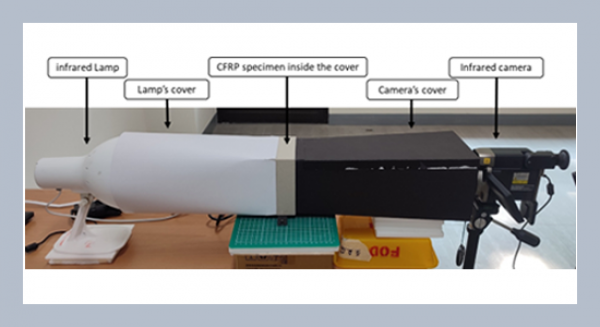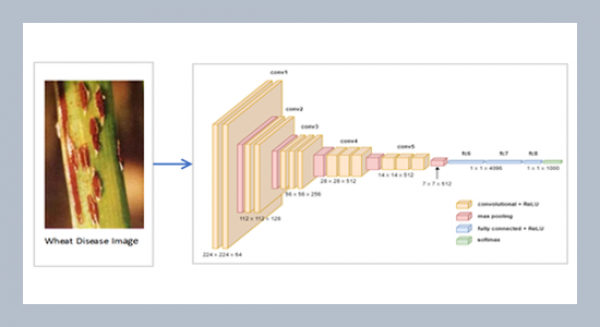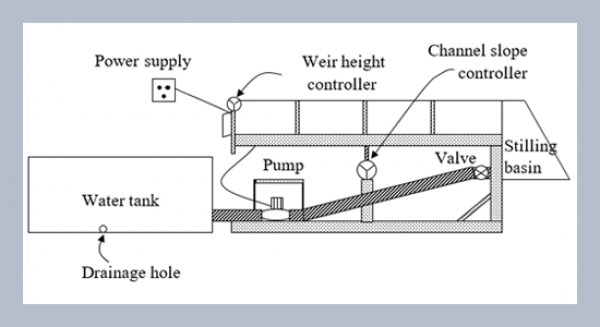REFERENCES
- [1] Allahviranloo, T., Lotif, F. H., Kiasary, M. K., Kiani, and Alizadeh, L. 2008. Solving fully fuzzy linear programming problem by the ranking function. Applied Mathematical Sciences, 2: 19-32.
- [2] Bellman, R. E. and Zadeh, L. A. 1970. Decision making in a fuzzy environment. Management Science, 1: 141-164.
- [3] Buckley, J. and Feuring, T. 2000. Evolutionary algorithm solution to fuzzy problems: fuzzy linear programming. Fuzzy Sets and Systems, 109: 35-53.
- [4] Campos, L. and Gonzalez, A. 1989. A subjective approach for ranking fuzzy number. Fuzzy Sets and Systems, 29: 145-153.
- [5] Campos, L. and Verdegay, J. L. 1989. Linear programming problems and ranking of fuzzy numbers. Fuzzy Sets and Systems, 32: 1-11.
- [6] Chang, P. T. and Lee, E. S. 1994. Ranking of fuzzy sets based on the concept of existence. Computers and Mathematics with Applications, 27: l-21.
- [7] Chen, S. H. 1985. Operations on fuzzy numbers with function principal. Tamkang Journal of Management Sciences, 6: 13-25.
- [8] Chen, S. J. and Chen, S. M. 2003. A new method for handling multicriteria fuzzy decision making problems using FN-IOWA operators. Cybernetics and Systems, 34: 109-137.
- [9] Chen, S. J. and Chen, S. M. 2007. Fuzzy risk analysis on the ranking of generalized trapezoidal fuzzy numbers. Applied Intelligence, 26: 1-11.
- [10] Chen, S. M. and Chen, J. H. 2009. Fuzzy risk analysis based on the ranking generalized fuzzy numbers with different heights and different spreads. Expert Systems with Applications, 36: 6833-6842.
- [11] Chen, S.P. and Hsueh, Y.J. 2008. A simple approach to fuzzy critical path analysis in project networks. Applied Mathematical Modelling, 32: 1289-1297.
- [12] Chen, S. and Li, G. C. 2000. Representation, ranking and distance of fuzzy number with exponential membership function using graded mean integration method. Tamsui Oxford Journal of Mathematical Sciences, 16: 125-131.
- [13] Chen, C. C. and Tang, H.C. 2008. Ranking nonnormal p-norm trapezoidal fuzzy numbers with integral value. Computers and Mathematics with Applications, 56: 2340-2346.
- [14] Chen, S. M. and Wang, C. H. 2009. Fuzzy risk analysis based on ranking fuzzy numbers using α− cuts, belief features and signal/noise ratios. Expert Systems with Applications, 36: 5576-5581.
- [15] Cheng, C. H. 1998. A new approach for ranking fuzzy numbers by distance method. Fuzzy Sets and Systems, 95: 307-317.
- [16] Chu, T. C. and Tsao, C. T. 2002. Ranking fuzzy numbers with an area between the centroid point and original point. Computers and Mathematics with Applications, 43: 111-117.
- [17] Delgado, M., Verdegay J.L., and Vila, M.A. 1989. A general model for fuzzy linear programming. Fuzzy Sets and Systems, 29: 21-29.
- [18] Dinagar, D.S. and Palanivel, K. 2009 The transportation problem in fuzzy environment, International Journal of Algorithms. Computing and Mathematics, 2: 65-71.
- [19] Dubois, D. and Prade, H. 1980. Fuzzy Sets and Systems, Theory and Applications. Academic Press, New York.
- [20] Fortemps, P. and Roubens, M. 1996. Ranking and defuzzification methods based on area compensation. Fuzzy Sets and Systems, 82, 319-330.
- [21] Ganesan, K. and Veeramani, P. 2006. Fuzzy linear programs with trapezoidal fuzzy numbers. Annals of Operations Research, 143: 305-315.
- [22] Hsieh, C. H. and Chen, S. H. 1999. Similarity of generalized fuzzy numbers with graded mean integration representation, in: Proceedings 8th International Fuzzy System Association World Congress, Vol-2, Taipei, Taiwan, Republic of China, 551-555.
- [23] Inuiguchi, M., Ichihashi, H., and Kume, Y. 1990. A solution algorithm for fuzzy linear programming with piecewise linear membership function. Fuzzy Sets and Systems, 34: 15-31.
- [24] Inuiguchi, M. and Ramik, J. 2000. Possibilistic linear programming: a brief review of fuzzy mathematical programming and a comparison with stochastic programming in portfolio selection problem. Fuzzy Sets and Systems, 111: 3-28.
- [25] Jain, R. 1976. Decision-making in the presence of fuzzy variables. IEEE Transactions on Systems Man and Cybernetics, 6: 698-703.
- [26] Kacprzyk, J. 1983. A generalization of fuzzy multistage decision making and control via linguistic quantifiers. International Journal of Control, 38: 1249-1270.
- [27] Kaufmann, A. and Gupta, M. M. 1985. Introduction to Fuzzy Arithmetics: Theory and Applications, New York: Van Nostrand Reinhold.
- [28] Kumar, A., Yadav, S. P. and Kumar, S. 2006. Fuzzy Reliability of a Marine Power Plant Using Interval Valued Vague Set. nternational Journal of Applied Science and Engineering, 4:1-82.
- [29] Kumar, A., Yadav, S. P., and Kumar, S. 2008. Fuzzy system reliability using different types of vague sets. International Journal of Applied Science and Engineering, 6: 71-83.
- [30] Kumar, A., Singh, P., Kaur, A., Kaur, P. 2010. RM approach for ranking of generalized trapezoidal fuzzy numbers. Fuzzy Information and Engineering, 2: 37-47.
- [31] Liou, T. S. and Wang, M. J. 1992. Ranking fuzzy numbers with integral value. Fuzzy Sets and Systems, 50: 247-255.
- [32] Luhandjula, M. K. 1987. Linear programming with a possibilistic objective function. European Journal of Operational Research, 31: 110-117.
- [33] Mahadavi-Amiri, N. and Nasseri, S. H. 2006. Duality in fuzzy number linear programming by the use of a certain linear ranking function. Applied Mathematics and Computation, 180: 206- 216.
- [34] Mahapatra, G. S. and Roy, T. K. 2006. Fuzzy multi-objective mathematical programming on reliability optimization model. Applied Mathematics and Computation, 174: 643-659.
- [35] Maleki, H. R. and Mashinchi, M. 2007. Multiobjective geometric programming with fuzzy parameters. International Journal of Information Science and Technology, 5: 35-45.
- [36] Maleki, H. R., Tata, M. and Mashinchi, M. 2000. Linear programming with fuzzy variables. Fuzzy Sets and Systems, 109: 21-33.
- [37] Mishmast Nehi, H., Maleki, H. R., and Mashinchi, M. 2004. Solving fuzzy number linear programming problem by lexicographic ranking function. Italian Journal of Pure and Applied Mathematics, 15: 9-20.
- [38] Nasseri, S.H. and Ardil, E. 2005. Simplex method for fuzzy variable linear programming problems. Proceedings of World Academy of Science, Engineering and Technology, 8:1307-6884.
- [39] Noora, A. A. and Karami, P. 2008. Ranking functions and its application to fuzzy DEA. International Mathematical Forum, 3:1469 -1480.
- [40] Okada, S. and Soper, T. 2000. A shortest path problem on a network with fuzzy arc lengths. Fuzzy Sets and Systems, 109: 129-140.
- [41] Pandian, P. and Natarajan, G. 2010. A new algorithm for finding a fuzzy optimal solution for fuzzy transportation problems. Applied Mathematical Sciences, 4: 79 - 90.
- [42] Ramik, J. 2005. Duality in fuzzy linear programming: some new concepts and results. Fuzzy Optimization and Decision Making, 4: 25-39.
- [43] Rommelfanger, H. 2007. A general concept for solving linear multicriteria programming problems with crisp, fuzzy or stochastic values. Fuzzy Sets and Systems, 158: 1892-1904.
- [44] Tanaka, H. and Asai, K. 1984. Fuzzy linear programming with fuzzy numbers. Fuzzy Sets and Systems, 13: 1-10.
- [45] Tanaka, H., Okuda, T., and Asai, K. 1974. On fuzzy mathematical programming. Journal of Cybernetics, 3: 37-46.
- [46] Wang, X. and Kerre, E. E. 2001. Reasonable properties for the ordering of fuzzy quantities (I). Fuzzy Sets and Sys-tems, 118: 375-385.
- [47] Wang, Y. J. and Lee, H. 2008. Therevised method of ranking fuzzy numbers with an area between the centroid and original points. Computers and Mathematics with Applications, 55: 2033-2042.
- [48] Yong, D., Wenkang, S., Feng, D., and Qi, L. 2004. A new similarity measure of generalized fuzzy numbers and its application to pattern recognition. Pattern Recognition Letters, 25: 875-883.
- [49] Yu, J. R. and Wei, T. H. 2007. Solving the fuzzy shortest path problem by using a linear objective programming. Journal of the Chinese Institute of Industrial Engineers, 24: 360-365.
- [50] Zadeh, L. A. 1965. Fuzzy sets. Information and Control, 8: 338-353.
- [51] Zimmermann, H. J. 1978. Fuzzy programming and linear programming with several objective functions. Fuzzy Sets and Systems, 1: 45-55.















